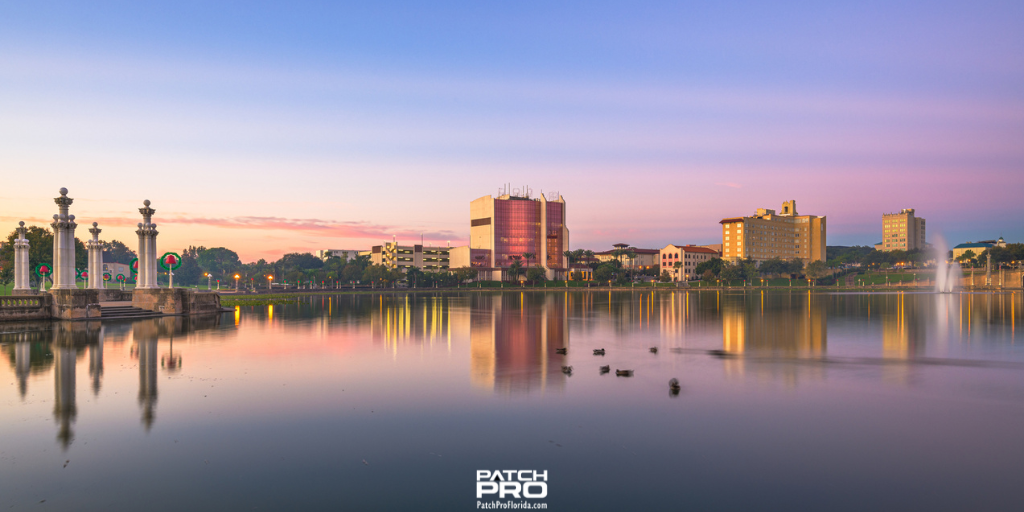Nestled between Orlando and Tampa, Lakeland is a vibrant city in the heart of Central Florida. Founded in the late 19th century, Lakeland has a rich history and an interesting origin story. In this blog post, we’ll take a journey through time, exploring the early days of Lakeland and how it evolved into the city it is today. So, buckle up and get ready for a trip back in time!
The Origins of Lakeland: The Land Before Time
Before delving into the founding of Lakeland, it’s important to understand the history of the land it sits on. The area was originally inhabited by Native American tribes such as the Timucua and the Calusa. However, by the time Spanish explorers arrived in the 16th century, these indigenous tribes had largely disappeared due to disease and warfare. In fact, it wasn’t until the 1800s that settlers began to establish communities in the region.
A New Beginning: The Founding of Lakeland
Lakeland was officially founded in 1885, when a group of Kentucky businessmen, led by Abraham Munn, purchased 80 acres of land in the area. The name “Lakeland” was chosen due to the numerous lakes that surround the city. To put things into perspective, Lakeland boasts 38 named lakes within its city limits. Back in those days, the city’s strategic location between Orlando and Tampa made it an ideal spot for a new settlement.
Transitioning into a new era, the arrival of the railroad in the late 1800s played a significant role in Lakeland’s development. With the South Florida Railroad connecting the city to other parts of the state, businesses started to flourish, and the population began to grow.
The Boom Years: Lakeland’s Rapid Expansion
During the early 1900s, Lakeland experienced a period of rapid expansion, with the population increasing from just over 1,000 residents in 1900 to more than 15,000 by 1925. This growth was fueled by the booming citrus industry, which made use of the fertile soil and warm climate in the region. In addition to agriculture, the phosphate mining industry also contributed to the city’s development.
As Lakeland’s population grew, so did its infrastructure. The city saw the construction of various public buildings, such as the Polk Theatre, which opened in 1928 and remains a beloved cultural landmark today. In the 1930s, the city began to develop its iconic park system, with the creation of Lake Mirror Park and the surrounding Hollis Garden.
Navigating the Twists and Turns of History
Lakeland faced its fair share of challenges over the years. For instance, the Great Depression in the 1930s had a significant impact on the city’s economy, leading to a decline in population and the temporary closure of several businesses. However, Lakeland’s resilience shone through as it managed to bounce back, thanks in part to the establishment of the Lodwick School of Aeronautics during World War II. This institution trained over 8,000 pilots and played a crucial role in the city’s recovery.
Modern Times: Lakeland Today
Fast forward to the present day, Lakeland is a thriving city with a population of over 112,000 residents, according to the U.S. Census Bureau.Its diverse economy now includes industries such as healthcare, education, and logistics. As the largest city in Polk County, Lakeland serves as a hub for the surrounding cities of Winter Haven, Bartow, and Auburndale.
Attractions and Events in Lakeland
Lakeland’s rich history is evident in its numerous attractions, such as the Polk Museum of Art, the Florida Air Museum, and the Frank Lloyd Wright-designed buildings at Florida Southern College. Additionally, the city hosts various events throughout the year, including the SUN ‘n FUN Aerospace Expo, which attracts aviation enthusiasts from around the globe.
Preserving the Past, Embracing the Future
Today, Lakeland continues to balance its historical roots with modern advancements. For example, the city has made significant efforts to preserve its architectural heritage, with many of its historic buildings being restored and repurposed. In contrast, new developments such as the RP Funding Center and the emergence of a thriving downtown scene have given Lakeland a contemporary edge.
Lakeland is a Growing and Connected Community
As the city continues to grow, so does its sense of community. Numerous parks, recreational facilities, and public spaces help foster connections among residents. Furthermore, Lakeland’s convenient location in Central Florida allows for easy access to major cities like Tampa and Orlando, as well as nearby attractions such as Walt Disney World and Busch Gardens.
Lakeland is a City Built on History and Progress
The history and founding of Lakeland, Florida, tell a fascinating story of resilience and growth. From its humble beginnings in the 1800s to its present-day status as a thriving city, Lakeland has navigated the twists and turns of history to become the vibrant community it is today. As the city continues to preserve its past while embracing the future, there’s no doubt that Lakeland will remain an essential part of Central Florida’s landscape for generations to come.
Life in Lakeland, Florida
If you’d like to learn a bit more about life in Lakeland, we found this video on the Youtube Channel “Living in Tampa Florida.” It gives a good look at Lakeland, and if you happen to live outside the Tampa area, this video might make you want to move to Lakeland!


